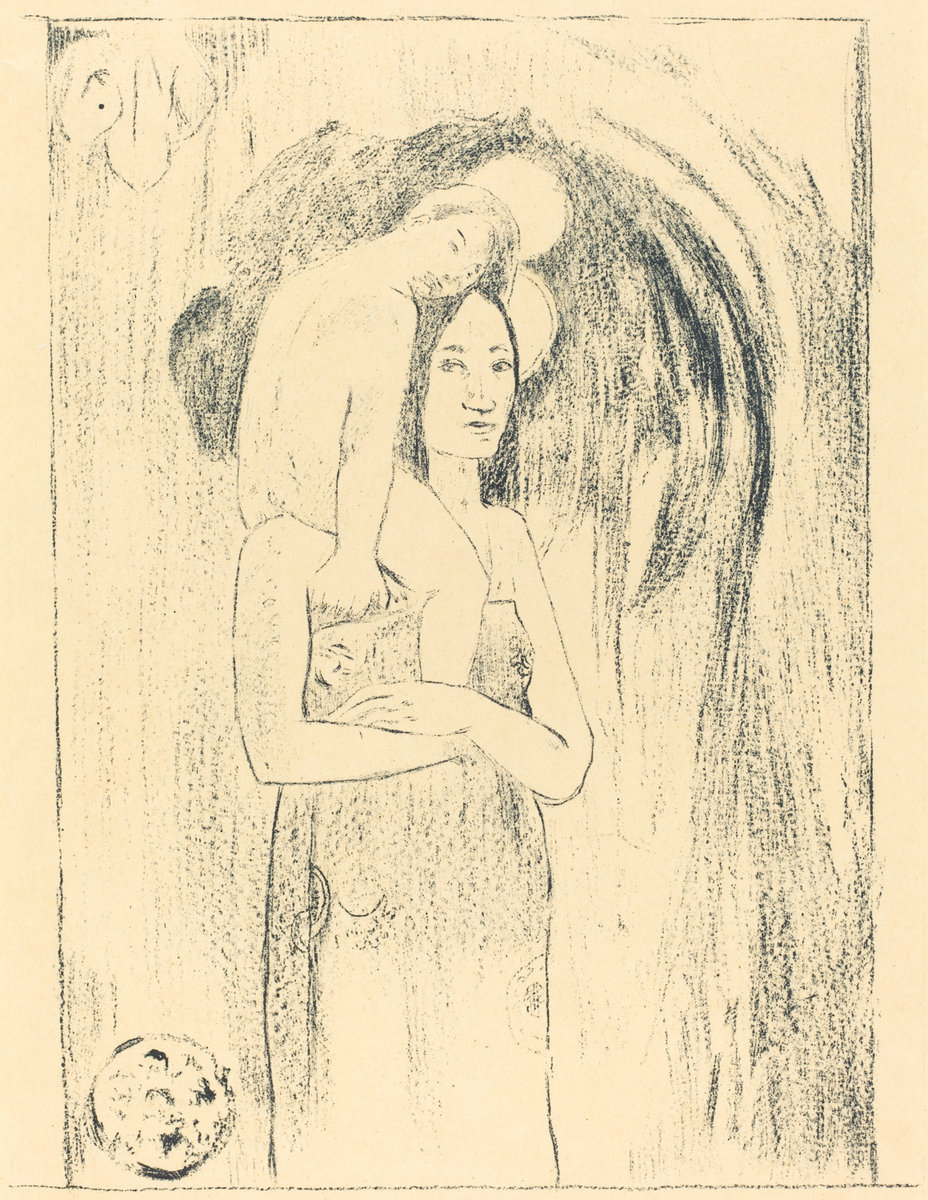Mary, Eve, and Gauguin’s Tahitian Tensions
Artist: Gauguin, Paul (French, 1848 – 1903)
Title: Ia Orana Maria (We Greet Thee, Mary)
c. 1894
lithograph (zinc) in blue
1963.11.99
National Gallery of Art, Washington, DC
Student Curator Comments:
Ia Orana Maria (We Greet Thee Mary) depicts Mary carrying the Child Jesus on her shoulder. She is not the pale, European Mary of Western tradition. Rather, she has dark skin and wears a paréo, a traditional Tahitian garment, which identifies her as an indigenous Tahitian woman. This lithograph was made after a painting of the same name in the Metropolitan Museum of Art. In the painting, a content Mary is greeted by visitors amidst a lush jungle landscape. In contrast to that vibrant source image, the setting of this monochromatic print is spare and Mary looks apprehensively to the left, perhaps suggesting an anxiety over something unknown.
After spending two difficult and unfulfilling years in Tahiti, Gauguin returned to his native France in 1893. Much of Gauguin’s work after his return is characterized by key elements found in this print: Tahitian women playing roles of religious significance with an underlying sense of anxiety or fear. This uncomfortable juxtaposition of Polyensian and Western cultures may reflect Gauguin’s perception of Westernization, corrupt colonialism, and Christianity as polluting forces in traditional Tahitian culture.





